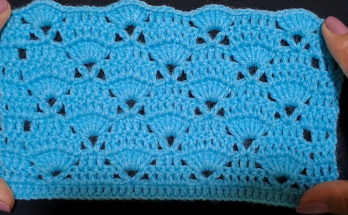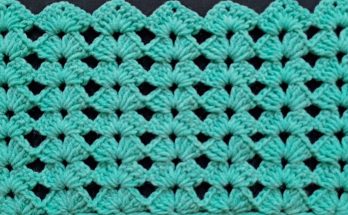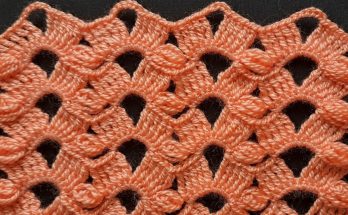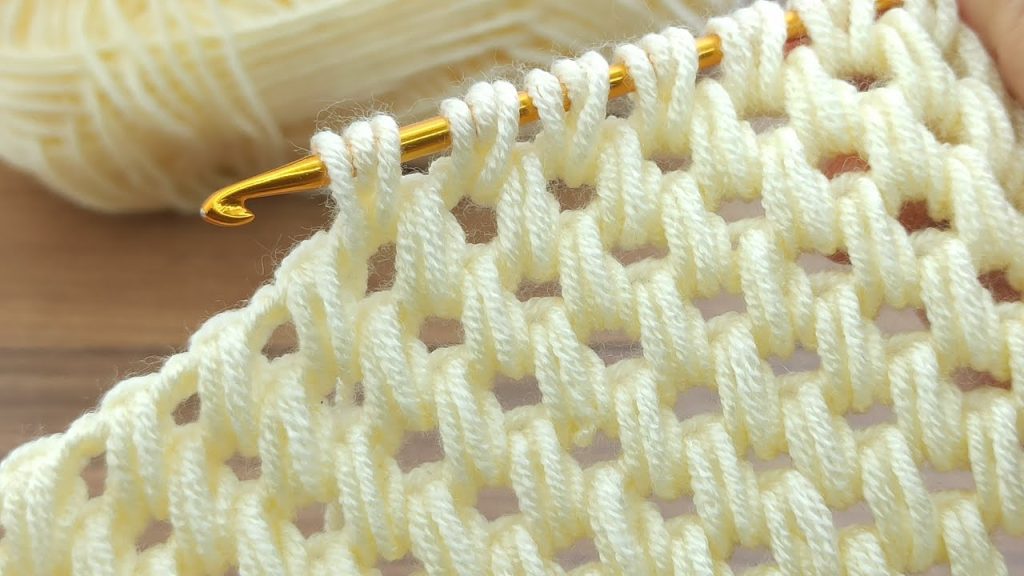
Welcome, Tunisian enthusiasts! Today, we are exploring a gorgeous stitch that combines the density of traditional Tunisian crochet with a slight openwork structure, creating a beautiful, modern texture. This Tunisian Open Rib Stitch (TORS) forms interlocking vertical bars that resemble a basketweave or staggered rib. The resulting fabric is thick, stable, and warm, making it perfect for cowls, bags, and contemporary blankets.
The key to this pattern is the two-pass technique inherent to Tunisian crochet, combined with inserting the hook through the back horizontal bar to achieve the distinct ribbing.
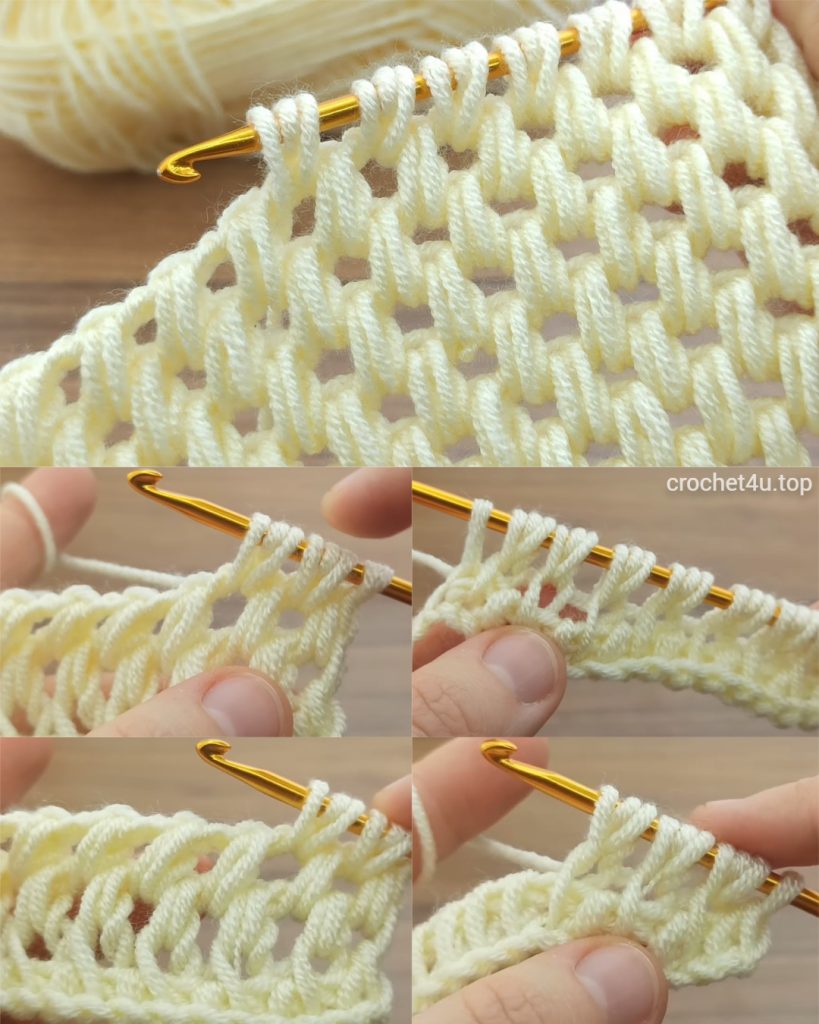
🛍️ Materials, Preparation, and Pro Tips
Choosing Your Tools for Structure
- Hook: A Tunisian crochet hook (afghan hook) is required, preferably one with a cable if you plan to make a wide project like a blanket.
- Hook Size: A 6.0 mm (J-10 US) or 6.5 mm (K-10.5 US) hook. You typically use a hook 1-2 sizes larger than recommended for your yarn to prevent the fabric from curling excessively.
- Yarn: A smooth, light-colored Worsted Weight (Aran/10-ply) yarn, like the cream shown, is ideal. Smoothness is essential for seeing the stitch definition clearly.
- Notions Checklist: Scissors and a tapestry needle.
Gauge and Multiple
- Pattern Multiple: This pattern is worked over a multiple of 2 stitches, plus 1 for the foundation chain.
- Example Chain (for a swatch): Ch 21 (2 x 10 = 20, plus 1 = 21).
📌 Stitch Abbreviations & Technical Definitions (Tunisian Terms)
Core Stitches
- ch: Chain
- st(s): Stitch(es)
- Tss: Tunisian Simple Stitch (Insert hook under the front vertical bar, yo, pull up a loop.)
- TFRS: Tunisian Full Rib Stitch (A modified stitch that involves picking up a loop under the back horizontal bar.)
- FwP: Forward Pass (Picking up loops and leaving them on the hook.)
- RetP: Return Pass (Working loops off the hook.)
- yo: Yarn Over
- Lp: Loop
Key Tunisian Components
- Last Stitch (Edge St): Always worked under both the front and back vertical bars of the last stitch of the previous row to create a clean, non-curling edge.
- Tunisian Open Rib Stitch (TORS) – The Texture: The key is alternating between picking up a loop in the standard vertical bar and the back horizontal bar of the previous row.
➡️ Phase 1: The Foundation Rows
The initial rows establish the basic grid of vertical bars needed for the textured stitch.
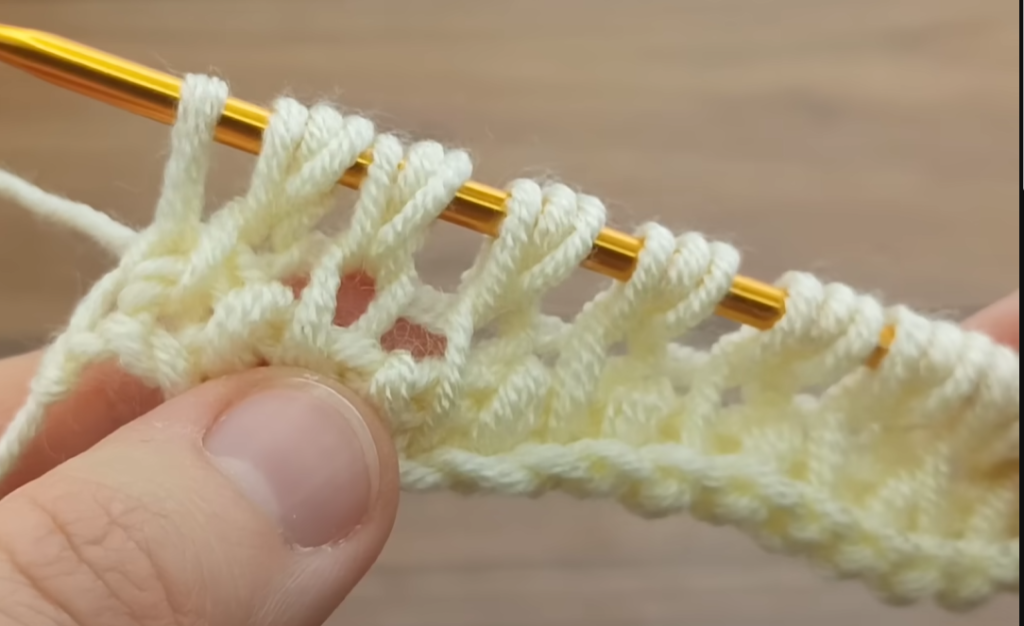
Row 1: Foundation Row (Tss)
- Ch the required number (e.g., Ch 21).
- FwP: Insert hook into the 2nd ch from the hook, yo, pull up a loop. Keep the loop on the hook. Repeat across the row, inserting the hook into the back bump of each chain. (You should have 21 loops on your hook).
- RetP: Yo, pull through 1 loop (chaining the first loop). *Yo, pull through 2 loops.* Repeat from * to * until only 1 loop remains on the hook.
Row 2: Setting the Base (Tss)
- FwP: Tss into every vertical bar across the row. Work the Last Stitch under both vertical bars. (You should have 21 loops on your hook).
- RetP: Yo, pull through 1 loop. *Yo, pull through 2 loops.* Repeat from * to * until only 1 loop remains on the hook.

〰️ Phase 2: Creating the Open Rib Texture
This three-row sequence creates the staggered, open rib effect shown in the image.
Row 3: First Open Rib Pass
- FwP:
- Tss into the first vertical bar.
- *Tss into the next vertical bar.
- Insert hook under the back horizontal bar (the chain space) of the next stitch, yo, pull up a loop. (This is the defining stitch for the staggered rib).
- Tss into the next vertical bar.*
- Repeat from * to * across the row, ending the sequence on a Tss.
- Work the Last Stitch under both vertical bars. (You should have 21 loops on your hook).
- RetP: Yo, pull through 1 loop. *Yo, pull through 2 loops.* Repeat from * to * until only 1 loop remains on the hook.

Row 4: The SC/Tss Stabilizer
This row acts as a standard Tss row to stabilize the fabric before the next staggered rib row.
- FwP: Tss into every vertical bar across the row. Work the Last Stitch under both vertical bars. (You should have 21 loops on your hook).
- RetP: Yo, pull through 1 loop. *Yo, pull through 2 loops.* Repeat from * to * until only 1 loop remains on the hook.
Row 5: The Staggered Open Rib Pass
To stagger the texture, the sequence is offset by one stitch.
- FwP:
- Insert hook under the back horizontal bar (the chain space) of the first vertical bar, yo, pull up a loop. (Starting the stagger).
- Tss into the next vertical bar.
- *Tss into the next vertical bar.
- Insert hook under the back horizontal bar (the chain space) of the next stitch, yo, pull up a loop.
- Tss into the next vertical bar.*
- Repeat from * to * across the row.
- Work the Last Stitch under both vertical bars. (You should have 21 loops on your hook).
- RetP: Yo, pull through 1 loop. *Yo, pull through 2 loops.* Repeat from * to * until only 1 loop remains on the hook.
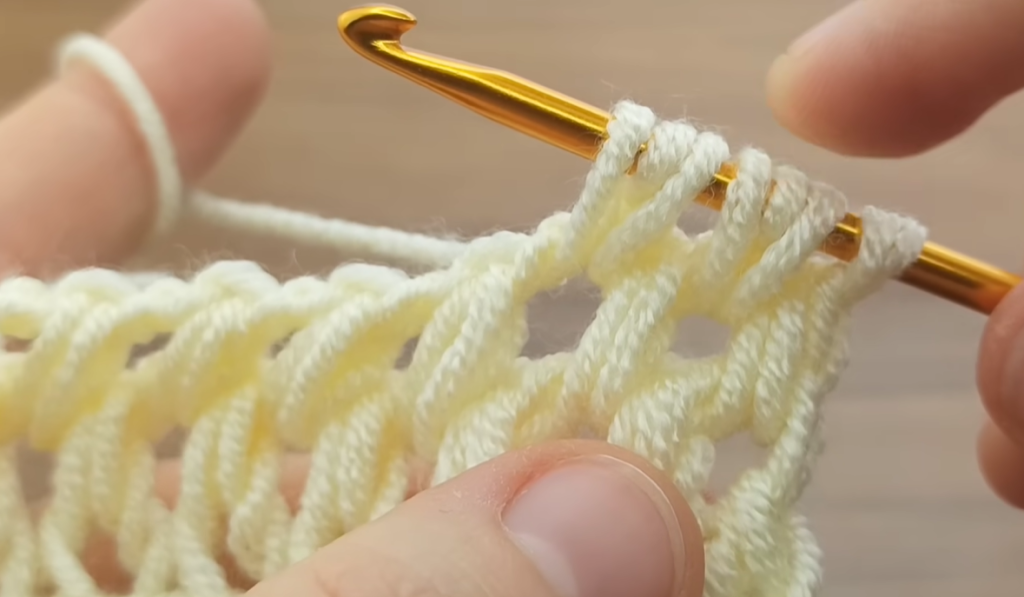
🔁 Phase 3: The Complete Pattern Repeat
The texture is fully created by repeating the two core texture rows: the Tss Stabilizer and the TORS Pass.
- Repeat Row: Repeat Row 4 (Tss Stabilizer) and Row 5 (Staggered TORS) until your piece reaches the desired length.
Video Tutorial:
✂️ Finishing and Structural Notes
Binding Off (Creating a Final Edge)
To finish your work, you must complete a final Bind Off row, which prevents the fabric from unraveling.
- FwP (Bind Off): Work the Forward Pass as a slip stitch bind-off. This means you work the stitches (Tss or the TORS) as usual, but when you pull up the second loop, you immediately sl st through the loop already on the hook (instead of leaving the new loop on the hook).
- Continue this method across the entire row.
- Fasten off and weave in the end.
Fabric Characteristics
The resulting fabric is thick, warm, and structured. The alternating open rib and tight Tss rows create a stable material that should resist the severe curling common in basic Tunisian Simple Stitch, particularly when blocked.
Blocking
Wet blocking is highly recommended. It will relax the tension, square up the edges, and allow the distinct open rib stitches to settle into their final, beautiful texture.
This Tunisian Open Rib Stitch creates a dense and visually intricate material that is perfect for contemporary crochet projects!

